- Home
- Best Pet for Me
- Fish Tank and Accessories: Creating the Perfect Habitat for Your Fish
Fish Tank and Accessories: Creating the Perfect Habitat for Your Fish
Each type of fish requires a different fish tank and accessories. Here are some general issues with taking care of your fish and their habitat.
Monitor Water: Fish Need a Good Temperature and Chemistry
 Photo by kabita Darlami on Unsplash
Photo by kabita Darlami on UnsplashWhen setting up a fish tank, one of the most important factors to consider is the water chemistry, as it plays a crucial role in ensuring the health and well-being of your fish. Different species of fish require specific water conditions, so it’s important to match the environment to their needs. For example, saltwater fish should never be mixed with freshwater fish because the salinity levels in the water won’t suit both types of fish. Similarly, maintaining a consistent water temperature is essential for all fish to thrive—ensuring that your fish are comfortable with the same temperature range is vital for a harmonious tank environment.
Aside from salinity and temperature, pH levels are another key factor in maintaining a healthy tank. The pH of the water must be balanced according to the type of fish you are keeping. Too high or too low pH can stress the fish and lead to health problems. Additionally, fish produce waste that breaks down into ammonia, nitrates, and nitrites, which can build up over time and poison the water, making it unsafe for your fish.
A filter is essential to remove excess waste and chemicals, and live plants can also help absorb excess nutrients, stabilizing the chemical levels in the tank. However, despite these measures, it’s important to regularly test the water quality and make necessary adjustments. If the water becomes unbalanced, steps such as partial water changes, adjusting the filtration system, or adding supplements might be needed to keep the tank environment suitable for your fish. By carefully monitoring these factors, you can provide a healthy and comfortable home for your aquatic pets.
Algae Growth: Another Problem with the Fish Tank and Accessories
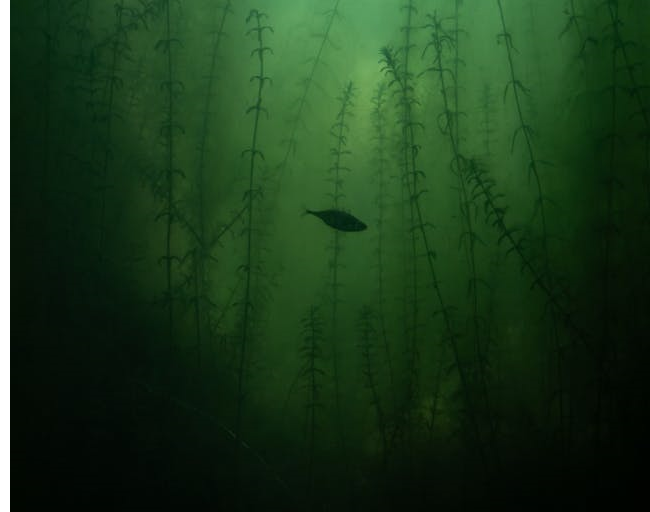 Photo by Vincent M.A. Janssen: https://www.pexels.com/photo/fish-swimming-underwater-26443424/
Photo by Vincent M.A. Janssen: https://www.pexels.com/photo/fish-swimming-underwater-26443424/One common issue in fish tanks is the growth of algae, which can quickly become a problem if not managed properly. Algae thrive in conditions where there is excessive light, leftover fish food, or an imbalance in the water chemistry. A dirty tank is another breeding ground for algae, as organic matter decomposes and encourages its growth. To keep algae under control, it's important to maintain a regular cleaning schedule, ensure proper filtration, and monitor water quality.
In addition to cleaning the tank regularly, you can introduce live plants and algae-eating fish, both of which can help reduce algae buildup naturally. Live plants not only improve the aesthetics of the tank but also help absorb excess nutrients, limiting the food supply for algae. Algae-eating fish, such as plecos or snails, can actively graze on algae, preventing it from overtaking your tank. Additionally, adjusting the light cycle and ensuring that your fish tank and accessories receive the right amount of light each day can help prevent algae from flourishing.
Proper feeding is also essential for algae control—overfeeding fish leads to uneaten food decomposing in the tank, creating an ideal environment for algae growth. By regularly testing the water and maintaining a balance, you can keep the water clean, healthy, and free from unwanted algae.
Cycling: Preparing Your Tank for New Fish
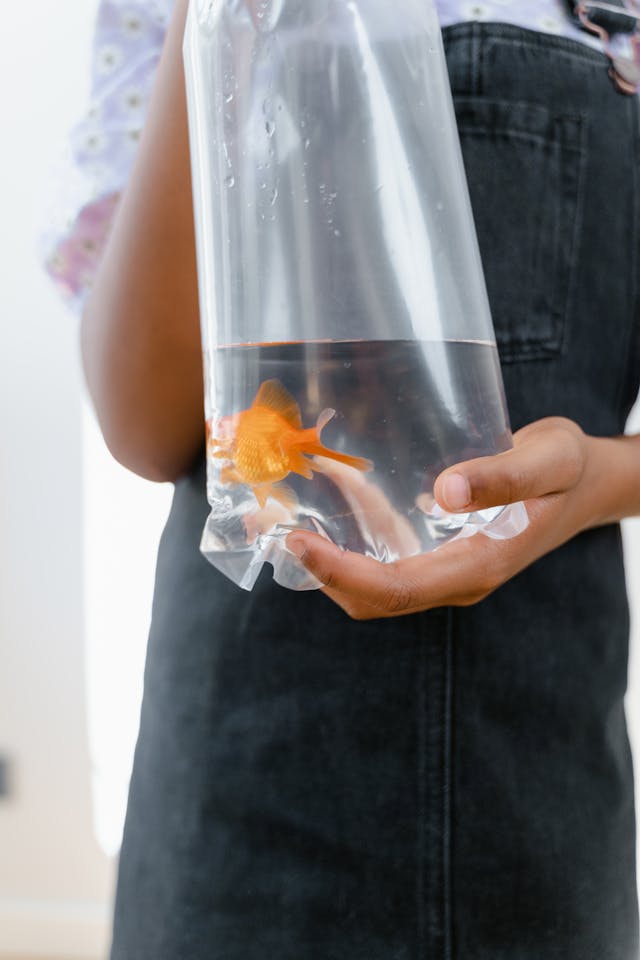 Photo by MART PRODUCTION: https://www.pexels.com/photo/a-person-holding-a-plastic-with-water-and-fish-inside-8434773/
Photo by MART PRODUCTION: https://www.pexels.com/photo/a-person-holding-a-plastic-with-water-and-fish-inside-8434773/Cycling your fish tank is an essential step in preparing it for new fish. It involves establishing the beneficial bacteria and achieving the proper water chemistry necessary for the health of your aquatic pets. This process is best done before introducing any fish, and it typically takes a few months to complete properly.
To cycle your tank, you can add fish food to a fully set-up tank. The decaying food raises ammonia levels in the water, which triggers the formation of nitrites. Over time, beneficial bacteria begin to multiply, helping to break down harmful substances. As the process continues, the nitrate levels will rise, completing the cycle and creating a stable environment for your new fish.
If you adopt fish with a tank that is already set up, you might not need to go through the entire cycling process. However, transporting the fish and tank to their new home requires careful handling to ensure the water conditions remain stable during the move. Make sure the fish tank and accessories are properly set up and secured during transport to avoid disrupting the water chemistry.
Aeration: Fish Need Oxygen Too
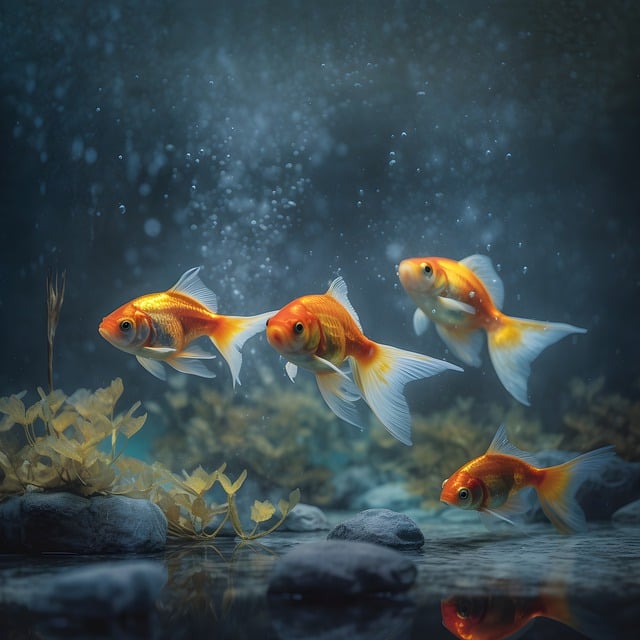 Image by geraldrose from Pixabay
Image by geraldrose from PixabayFish require oxygen to thrive, and it's crucial to maintain proper oxygen levels in their environment. One natural way to oxygenate the water is by incorporating living plants into the fish tank, as they release oxygen during photosynthesis. However, if you notice that your fish seem quieter than usual, stay at the top of the tank trying to breathe air, or if their gills are moving rapidly, it’s an indication that the oxygen levels are low, and you’ll need to take action.
While not all tanks require aerators, they can be beneficial in certain situations. Tanks with a large number of fish, warm water environments, and saltwater setups are more likely to need aeration. Aerators help to increase oxygen circulation, ensuring that your fish have the proper conditions for breathing. So, keep an eye on your fish's behavior, and be prepared to add aeration if needed to keep your aquatic friends healthy. Additionally, make sure to properly maintain your fish tank and accessories, as factors like poor filtration and overstocking can also lead to oxygen deficiencies.
Cleaning the Tank
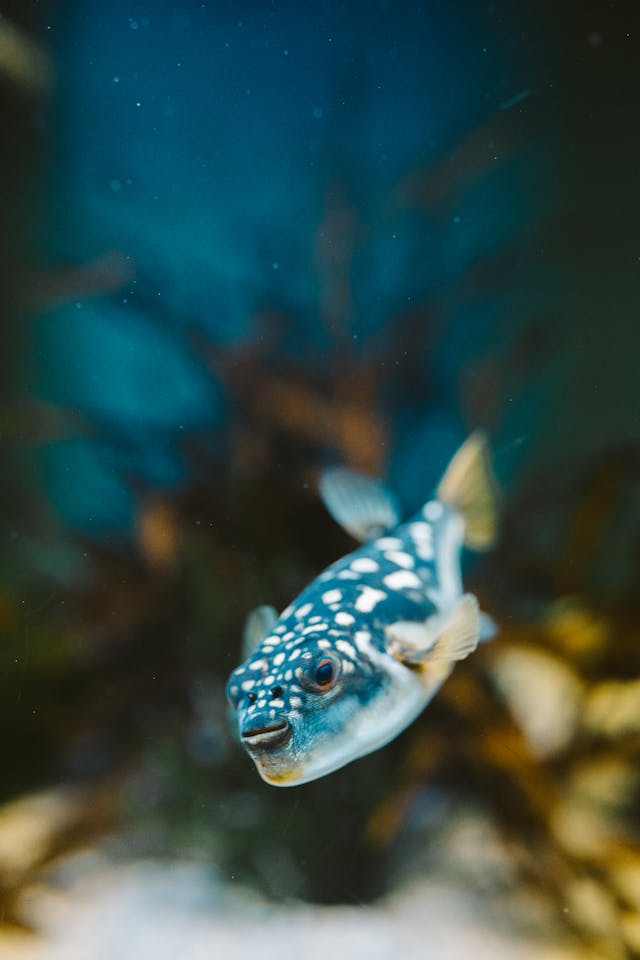 Photo by Taryn Elliott: https://www.pexels.com/photo/close-up-of-a-blue-fugu-fish-5546939/
Photo by Taryn Elliott: https://www.pexels.com/photo/close-up-of-a-blue-fugu-fish-5546939/Proper maintenance is key to keeping your fish healthy and your tank looking great. When cleaning your fish tank, it’s important to only replace about a quarter of the water each time to avoid disturbing the delicate balance of the ecosystem. Be sure to wipe down both the inside and outside of the tank to remove any algae or dirt buildup. Don’t forget to clean the tubes and accessories, as well as vacuum the gravel or any other substrate to remove debris that can accumulate over time.
Trimming your live plants will also help maintain the tank’s aesthetic and prevent overcrowding. Regular cleaning and care of both the fish tank and accessories will ensure your fish have a healthy, thriving environment to live in.
Seasonal Maintenance for Outdoor Tank
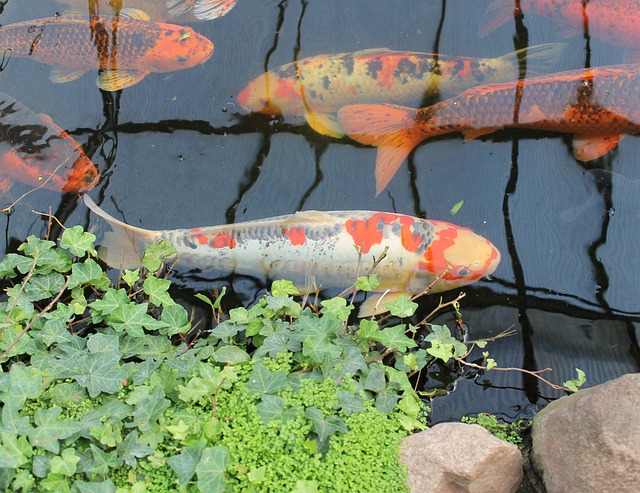 https://pixabay.com/photos/koi-fish-carp-japanese-pond-5277213/
https://pixabay.com/photos/koi-fish-carp-japanese-pond-5277213/If you have four seasons, each season has different outdoor tank maintenance requirements. In the winter you need to worry about ice forming and cutting off oxygen to the fish. You can put de-icers in the water and have floating wood in the pond to help with this. Many fish will hibernate when it gets really cold and you should not feed them much during this time. You might also have to turn off some of the water pumps in the cold months.
In the spring you would start to increase the food you give them, clean debris, and replace a large amount of the water. You can also add some plants that you had to remove in the fall.
In the summer you have to be sure the water doesn’t get too hot or oxygen-deprived. You have to clean the filters and pumps more often.
In the fall you start to limit the food as the temperature drops and you may remove some of the plants that won’t survive the winter.
Feeding: Don't Overfeed Your Fish
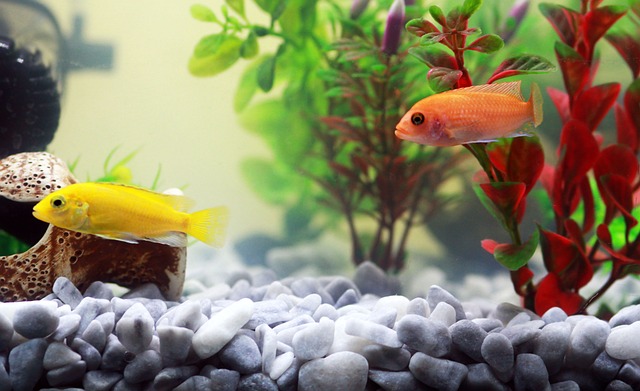 Image by Irina from Pixabay
Image by Irina from PixabayThe fish should eat all the food you give them in 5 minutes. You shouldn’t have excess food in the tank because that will cause too much algae growth. Fish do well with being fed twice or three times a day. Some fish are omnivores, some are carnivores, and some are herbivores. The type of food you give each one is different. You can buy commercial fish food flakes, tablets, sticks, wafers, or pellets for the type of fish that you have.
Fish Tricks: You Can Train Your Fish!
While fish are fascinating to watch you can also interact with them. Handling them can be very stressful for them, but you have other options.
You can use pellet food to reward your fish whenever it does what you want. Put your finger on the side of the tank and reward the fish when it comes to your finger. Once the fish has that down, you can move your finger around and reward the fish when it follows your finger. You can also do this with your finger in the water if you have a fish that doesn’t bite.
You can use this finger training to get a fish to swing through a hoop you have placed in the tank, or to follow an obstacle course in the tank.
If you hold the food just above the water's surface, the fish will learn to jump out of the water.
You can explore other ways of interacting and training your fish for some rewarding times together.
Health of Fish
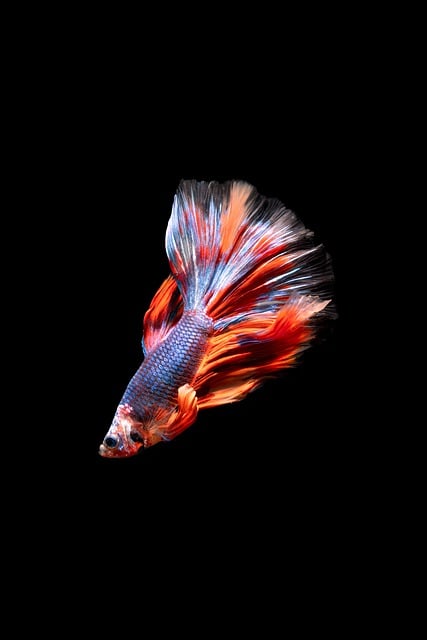 Image by u_e513exii8e from Pixabay
Image by u_e513exii8e from PixabayTo keep fish healthy, you should make sure that water temperature and chemistry are proper for the fish that you have and consistent. You need to feed the fish just the right amount with food that is meant for the type of fish you have. Make sure the fish in your tank get along with each other. Keep lights on about a 12-hour schedule. Clean the tank and accessories regularly.
If you notice a change in behavior or appearance of your fish, it could be a sign that they are sick. You can consult with a fish veterinarian. Fish can get spots on their skin, have damaged fins or tails, lay quietly on the bottom of the tank, or exhibit many other signs of distress that would call for a vet consult.
Adding New Fish and Quarantining Fish
Whenever you add a new fish to your tank, you should quarantine it first. Having a separate “quarantine tank” where you can keep the new fish for two weeks ensures that the fish is healthy before introducing it to your main tank with the other fish. A quarantine tank is also essential whenever you suspect an existing fish may be sick. This precaution helps prevent potential contamination or the spread of diseases.
Introducing a fish to a new tank or a quarantine tank should be done gradually. Turn off the lights to reduce stress for the new fish. Place the bag containing the fish in the tank so that it floats, allowing the water temperature to adjust over a 15-minute period. After this, open the bag and test both the bag water and the tank’s water for pH levels. If they are different, gradually add a little tank water to the bag, waiting another 15 minutes each time until the pH levels match. Finally, using a net, transfer the fish into the tank, avoiding dumping the water from the bag into your tank, as it may contain impurities. Properly handling the introduction of new fish, along with maintaining your fish tank and accessories, is key to ensuring a healthy and balanced aquatic environment.
Conclusion
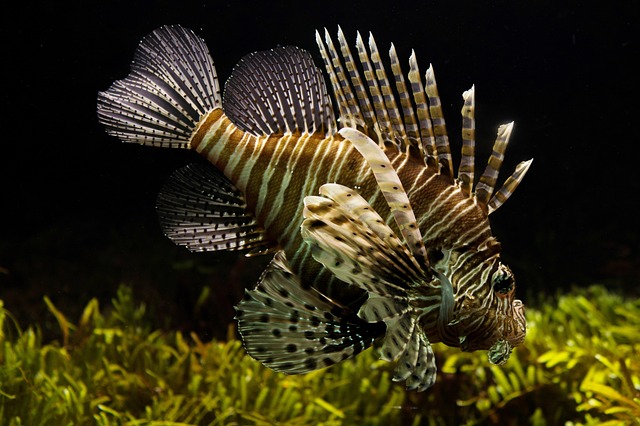 Image by Rudy and Peter Skitterians from Pixabay
Image by Rudy and Peter Skitterians from PixabayThere are several types of fish that need slightly different care. You need to get the right tank and equipment for your fish and then you need to maintain the tank, equipment and the fish themselves. This way you keep your fish healthy and you can enjoy each others company for a long time.







New! Comments
Have your say about what you just read! Leave me a comment in the box below.